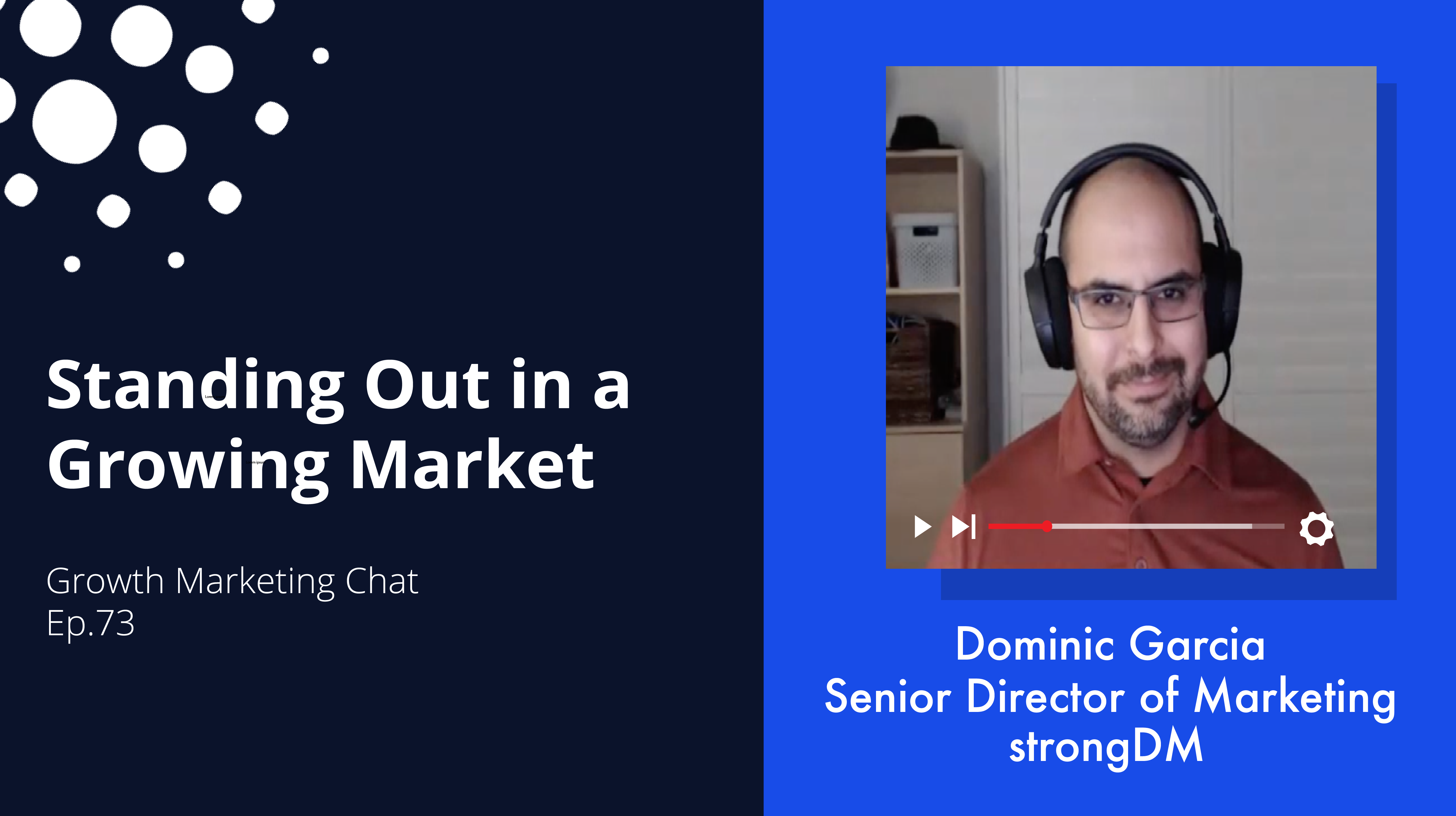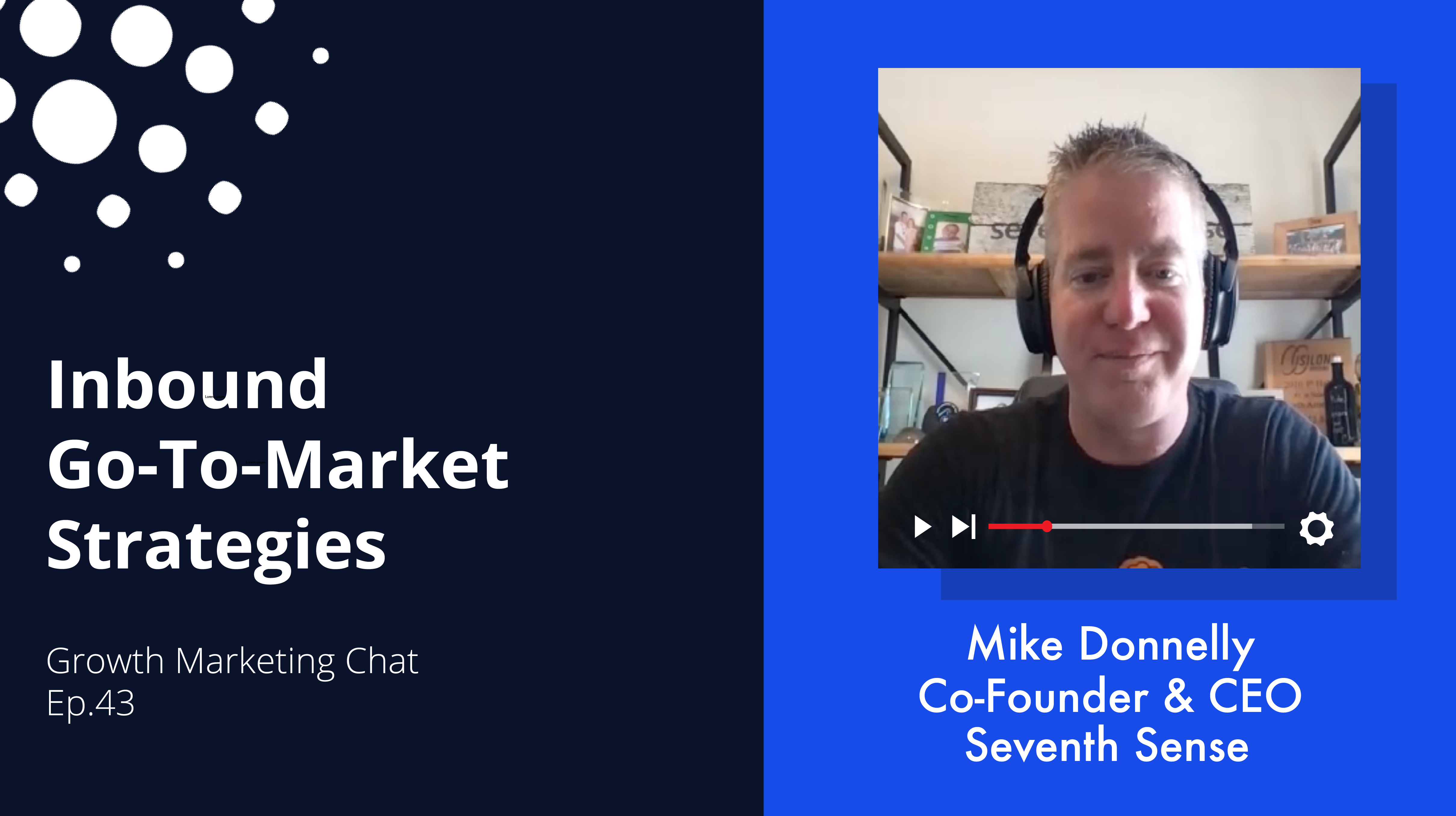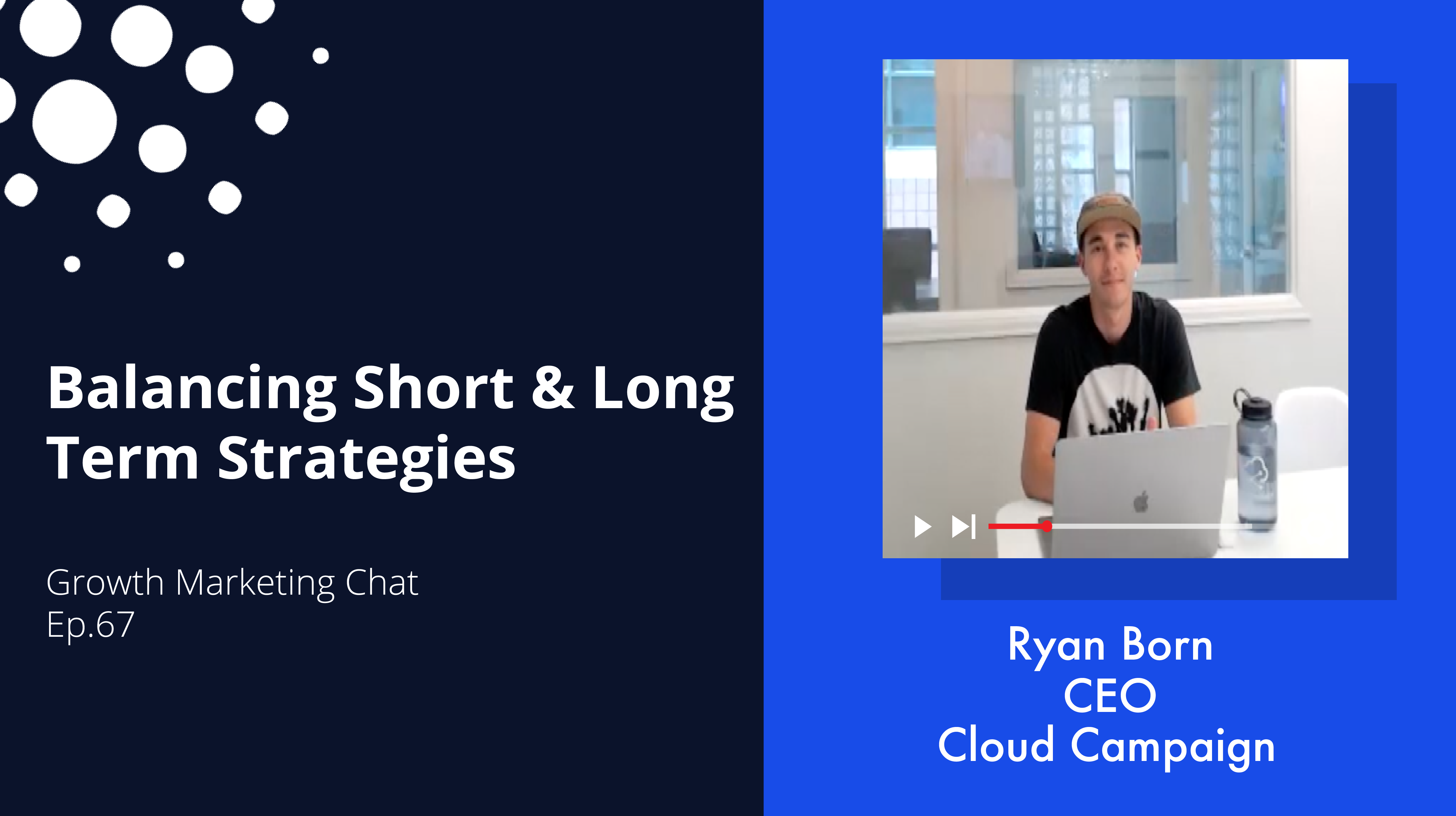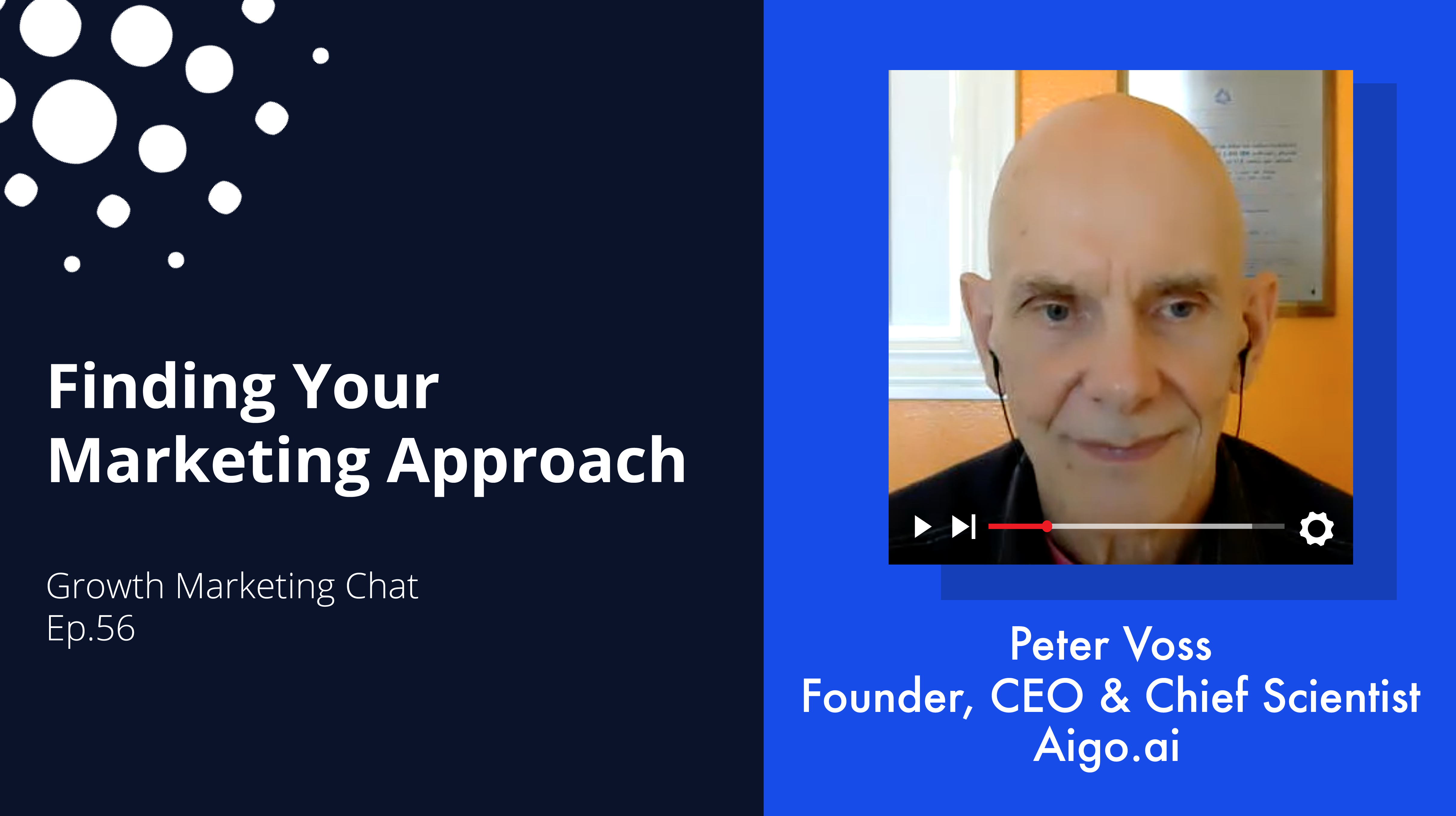Year 1 of a start-up is as essential as the first year of a human’s life.
That might sound dramatic, but fundamental growth and formation have to happen to set a newborn on the right trajectory, and the same goes for a start-up!
To get a start-up off on the right foot, developing a focused marketing strategy early on is key.
This will take work, but with the right strategy and the right marketing goals in place, you can promote your product and vision with honesty and attract the right kinds of customers who believe in your start-up's goals and will help you achieve them.
“...My advice to somebody who's doing this is first off, it doesn't happen overnight. There's no way you can do this overnight. It has to be something you build over time.”
How to Make the Most of Year 1 of Your Start-Up
In this week’s Growth Marketing Chat episode, Charles Givre, founder and CEO of DataDistllr, shares his own experience to give some vital tips on what you should be doing during your start-up's first year.
Tune in to find out:
- How to balance the current product with the future vision
- Why the optics of your product matter so much
- The importance of having the right leadership team (and the right marketing first-hire)
- What being open and genuine can do for your business
- How you can market with your LinkedIn network
Investing early on in your start-up marketing strategy through a full-stack marketing approach that pays attention to every stage of the funnel and engages warmly and consistently with leads will not only drive revenue during year 1; it’ll also set you up for future success.
Watch the full interview to find out how to make the most of that crucial first year and setup your start-up to grow and succeed!
Video Transcript:
CAROLINE: Hi, welcome to Growth Marketing Chat. Today I'm here with Charles Givre. He's the founder and CEO of DataDistillr. Charles, thank you so much for being with me today.
CHARLES: Thank you so much for having me.
CAROLINE: Awesome. So before we start, I'd love for you to give us a little background on your company, like when you started, what do you guys do, that'd be awesome.
CHARLES: Sure. So my company is called DataDistillr. And our mission is to make the world's data easy-to-use inquiry. I started our company about, I co-founded our company in like, kind of Q3 fall-ish timeframe of last year. So, we're born from the pandemic. And yeah, we've been kind of going strong ever since.
CAROLINE: Awesome. Okay, so, your, in your first year still? Or beginning of your second year?
CHARLES: Yeah. We're still in our first year really.
CAROLINE: Yeah, and so that's a very interesting year for companies, as you know, obviously, you have a great product already, but there so much more to your vision in your first year, then there is to the current product. So my question for you is, like, how do you sell based on that and how do you balance, you know, what you have versus the vision as well?
CHARLES: It's, it's quite challenging, especially because our product is, it's a data product and our target audience, our target audience is not just individual users, but it's enterprises. So enterprises like to get fully baked products. And it's difficult when your product is still, kind of, you know, a bit hand-wavy, it's like, you know what you're going to make, but it's just not there yet. So a lot of it is you really have to have a, at least in my opinion, but we've had to do is clearly articulate our value proposition, clearly articulate where we are in that and kind of help, like get people to buy the vision, rather than necessarily the product.
And I mean, not to say that we're selling vaporware, cause we're certainly not. Our product is very functional. It is very powerful where it is already, but a lot of it is, is trying to basically convince people of what we're trying to do.
CAROLINE: And so again, in the early stage, right, for product companies, especially when you're selling to enterprise, it's really important to find really good partners that will help you build on your vision, right. With their feedback and make your vision even better. So how do you go about finding these partners?
CHARLES: We've been doing that, a kind of, a number of different ways. So, we have a Director of Growth, who also, has podcasts, that he is very good at, you know, kind of getting audiences, before, you know, decision makers at large companies. I have a fairly, fairly robust LinkedIn network, so, I've been blogging and trying, putting the word out there. But, really what we do, is, I think, a lot of it comes from my leadership team.
We have a lot of experience in the data world and we kind of know what problems people are really having. And so, we can really explain it at a real, you know, with, with authenticity, how our product is really going to solve their problems. And I think that plays a big, a big part in kind of, how, you know, getting first off, getting people to talk to us. And then once they are speaking to us, kind of knowing, well, even though they may not spell something out, explicitly kind of knowing what they're thinking, understanding where, you know, where they're coming from and anticipating what they're going to ask, and having good answers to their questions.
And I think that comes from the fact that our leadership team really has a lot of exper experience, not just billing, not just the technical level, but having sat on the other side of the table. I was at JP Morgan. And for, for in, before that Deutsche Bank, and I've talked to many startups and, you know, been part of the process where, we've brought in companies to, to work at those organizations. So I know what it's like, like from the other side of the table, so, when you have that experience, you kind of, you can kind of apply that and make sure that we're prepared, when we go into conversations with large enterprise.
CAROLINE: Right, so right. I mean, and just understanding, really understanding the pain and being able to talk to your customers and your partners and your prospect at that same level, that they're at really makes a difference. Right?
CHARLES: Yeah. And I think also one of the things that, I mean, my personal view is, you know, you don't want to be disingenuous in terms of misrepresenting what the status of your product is, or, cause I know some people basically say anything to get a sale, but, at some point you have to deliver. And so, you don't want to promise something that you can't deliver, and cause that, I think that, just really kills any, you know, any hope you may have with a, you know, if you're trying to build a long-term relationship.
CAROLINE: Yeah, yeah, yeah. Yeah, and you can create real loyalty from this rate and customer loyalty. And if people fall in love with your vision, your mission, your product then you're going to grow, right. But, if you sell them something that doesn't exist and then they might fall in love with your vision, but they won't fall in love with the product. And like all this effort is kind of wasted.
CHARLES: Yeah, no, absolutely. I'm also a very big believer. So we, as a company, made the choice early on to invest in a lot of user experience work and, and just to make sure that our product not only functions really beautifully, but looks beautiful. And it doesn't look like something that was thrown together. It really has a feel of a very mature product. And unfortunately, people do, unfortunately or fortunately. People do judge books by their cover. It is important, at least it's important to me that our product looks really well. It looks really great. It functions really great. It's intuitive and easy to use. And I think so many companies don't, especially for enterprise products, less so for consumer products, but they don't pay attention to those little details.
And I also do think that makes a difference. Every time we show our products, people, people always comment on how, how I'll use the word, beautiful, how it looks. And it just feels really intuitive. And it just looks really nice and mature even though it's still not yet.
CAROLINE: Yeah. I mean, it's really important when you think about your users right. They are going to be in your product hopefully for a long time during their day. Right? How do you want them to feel when they're in your product? Hopefully you want them to feel good, right. Happy, excited to be there. Right?
CHARLES: Yeah, absolutely. Absolutely. I want them to feel happy. I want them to have a good user experience. I have, I want them to feel smarter for having used our tool. I want them to feel good about, like, feel that they're getting their job done more quickly, more efficiently, you know, I, I, yeah. I want I, those are all, that's all part of the user experience and that's why, that is exactly why we, we chose to, you know, put a decent amount of effort into the, into the UX, early on.
CAROLINE: Yeah. Yeah, and yeah, that's, that's definitely really important for growth in general. And especially when you start showing your product off. Okay. So I guess to, to conclude here, I know that you mentioned, you know, you have a Director of Growth or head of growth that has a podcast, and you have a huge presence on LinkedIn and blogging, and your leadership team is really involved in kind of, creating this high-level credibility and awareness. Can you tell us more about, like, if it's something that a lot of companies, especially early stage struggle with, because it's, it's a really great channel, but it's also, it doesn't necessarily have direct results and it takes a lot of effort to bring to a certain level.
So, can you tell us more about, how you decided to invest time in this, how it's been working for you, and if you have any advice, for people can, like, who are in your shoes who are trying to decide, should I use. Sure.
CHARLES: Sure, I've professionally, even before I launched the, the, my company, I've, I've spent a lot of time on LinkedIn doing with professional networking, and I've seen it from my own career, how many opportunities I've gotten just as a result of doing personal networking on, on LinkedIn. And so, for me, it was kind of just a natural transition, like, okay, now I'm doing this. Now I'm, you know, promoting my company effectively, not just me and the things that I'm, you know, that I'm interested in. But I think my, my advice to somebody who's doing this is first off, it doesn't happen overnight. There's no way you can do this overnight. It has to be something you build over time.
But the other piece that I would say is just put yourself out there, get yourself comfortable doing that. Talk about things that are on your mind. In my view, it does it, I think it's better if it's, if it comes across as authentic. You can, of course, hire people to like, work your LinkedIn feed for you. And, I did that for a little while and I could really see, like, they're good at getting connections, but it doesn't, it doesn't like, if you saw the posts that person posted for me, it doesn't sound like me. It's not like, it doesn't have that ring of authenticity. So put your, put yourself out there, consistently having content that's interesting and engaging with people. I think that's really kind of, I mean, I don't think I'm saying anything revolutionary here, but what I started doing actually, and I've been surprised at the following I get from this is I started blogging about my experience as a founder, and I started just writing, like, here's, what's going on. And it's, some of it's mundane stuff, some of it's interesting, some of it's not, but, it really has, it's interesting to me, because, the number of conversations that I've had with people, well, they'll start off the meeting with, oh, I just read your blog post. And it was really interesting when you talked about that and it's really just like.
It showed me the reach that you can have even with something as small like. I mean we’ve got leads from this, we’ve got serious introductions, I’ve been invited to conferences, I got hired to teach classes and do webinars. I mean the list goes on and on. Just from organic LinkedIn work I have done. I think if I have to sum up, be authentic, it takes time, and just go for it, put yourself out there consistently. It has to be consistent, it can’t just be a blast and then forget about it for months. And don’t spam people they don’t like that.
CAROLINE: Yes, please don’t spam people. Alright, well thank you, it was really great. I really enjoyed our conversation. Thank you so much for participating.
CHARLES: Thank you so much.





